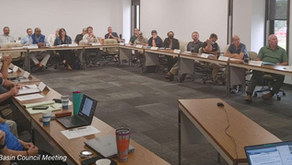Do You Share the Same Concerns about the American Rescue Plan Act as Water Utility Leaders?
- JD Solomon
- Mar 4, 2022
- 3 min read

The American Rescue Plan Act (ARPA) is now in full swing as states start to divide the monies to their units of local government. Two major problems are persistent. The first problem is that the amount of money provided is 2 to 5 times the normal capital improvement delivery rate, especially for the neediest units. The second problem is tight timelines for spending the money, and using traditional design-build-delivery methods is insufficient for the task at hand.
Utility Management Conference 2022
One of my most memorable conversations last August from UMC 2021 was with a seasoned design-build executive before dinner. "I have been in the alternative project delivery business for 40 years, but I have not been to this particular conference in about a decade,” he summarized. "I wanted to come back and see what was on the mind of utility leaders and see what aspects of our services are most relevant."
"What are you finding out?"
"That no one is really worried about construction or alternative project delivery. The three things most people are talking about are PFAS, workforce, and COVID,” he replied in frustration.
My, oh, my, have the times have changed in only seven months!
Solutions
Changes to State-Level Procurement Methods – Most U.S. states have provisions for alternative project delivery, including design-build and construction management at-risk (CMAR). However, many state statutes favor traditional design-bid-build delivery. A number of states, such as North Carolina, have modified their alternative delivery statutes in response to the surge in ARPA funding. Other states, such as South Carolina, are currently moving in a similar direction. The net effect could be delayed construction timelines and many owners testing a new delivery method for the first time.
Program and Construction Managers – Most units of local government do not have the capacity to deliver the influx of new projects. Using third-party program managers and construction managers is becoming more commonplace. In some cases, a hybrid approach between an owner's agent and a program manager is being created to manage one or two major capital projects. The net effect will be an extra 5 to 15 percent added to construction costs.
Changes to State-Level Building Codes – Many state building codes are not written to accommodate the many energy efficiency and climate change-related requirements embedded in the ARPA requirements. State building codes are scrambling to make building codes consistent with those new requirements. The net effect is delayed project delivery. In some cases, added construction costs of 20 to 30 percent have been estimated over traditional projects.
Formal Risk Management Programs – The uncertainty created by the short-term surge of ARPA funding combined with existing inflation, supply chain, and labor issues creates substantial uncertainties for capital projects. Many units of local governments do not traditionally use formal risk management approaches. With the surge in ARPA funding, more formal strategies and tools, such as Monte Carlo simulation, will be needed to mitigate risks effectively. The net effect is not in the form of additional costs as it is the form of many owners needing to learn more formal approaches quickly.
Notes
The American Rescue Plan Act of 2021, also called the COVID-19 Stimulus Package or American Rescue Plan, Pub L. No. 117-2 (March 11, 2021) is a US$1.9 trillion economic stimulus bill passed by the 117th United States Congress and signed into law by President Joe Biden on March 11, 2021, to speed up the country's recovery from the economic and health effects of the COVID-19 pandemic and the ongoing recession.
A state revolving fund (SRF) is a fund administered by a U.S. state for the purpose of providing low-interest loans for investments in water and sanitation infrastructure (e.g., sewage treatment, stormwater management facilities, drinking water treatment), as well as for the implementation of nonpoint source pollution control and estuary protection projects. An SRF receives its initial capital from federal grants and state contributions. It then emits bonds that are guaranteed by the initial capital. It then "revolves" through the repayment of principal and the payment of interest on outstanding loans.
Most federal money is traditionally passed through the USEPA to states for distribution to local units of government through state revolving fund (SRF) programs. Units of local government must comply with federal regulations attached to the funds and comply with their state procurement (project delivery) statutes, rules, and codes.
JD Solomon Inc provides services at the nexus of facilities, infrastructure, and the environment. We are currently working with units of local governments to manage the surge in capital projects as well as approaches to minimize new uncertainties and risks.




Comments